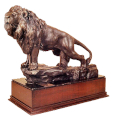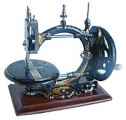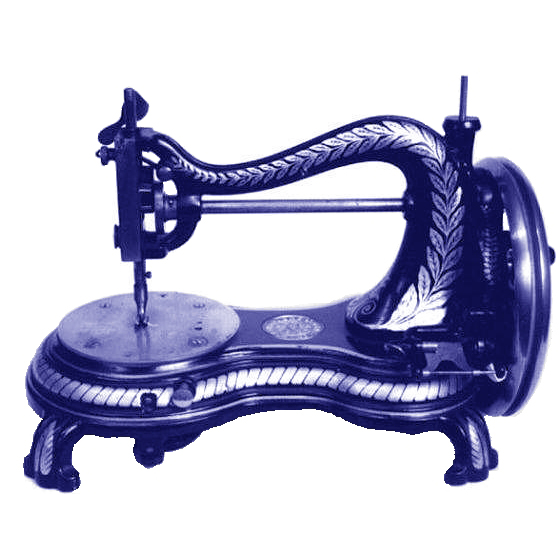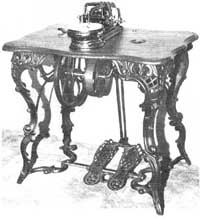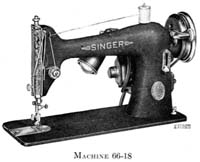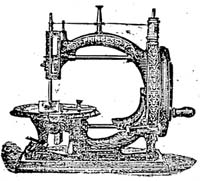Recent Advances on Sewing Machinery
ISMACS News
Issue 60
IT WAS billed to be the sewing-machine event of 1887 - the talk to be given by John W Urquhart to the Society of Arts on "Recent advances on sewing machinery".
Urquhart was the name in sewing-machine authoritative criticism of the time. He was the man called in to judge machines at the great exhibitions and had written many papers on machine design.
The news of his lecture was the talk of the sewing-machine trade, and all the big names journeyed to London to hear it.
In the audience was Newton Wilson, Charles Bradbury, representatives from Jones, Frister & Rossmann, Howe, Willcox & Gibbs and Wheeler & Wilson.
But the paper turned out to be a damp squib. Many had hoped that Urquhart would trace the development of the sewing machine, but what he did was to concentrate on recent small patents, particularly those of the Singer company.
In a discussion following the paper the right to claim the invention of the sewing machine caused quite a heated discussion.
Urquhart claimed that the credit either be-longed to America or perhaps France, but certainly not to England.
J C Chaplin, the representative of the Howe sewing machine company then jumped up and said that he had brought with him the original machine invented by Howe only to be capped by Newton Wilson who produced his copy of the 1790 Thomas Saint machine which he said would show how many of the "modern improvements" had been anticipated 16 years before Howe and 44 before the time of the Frenchman Thimmonier. He criticised Urquhart's address, saying that he should have referred to other recent inventions, and dramatically pulled from his pocket the Moldacot machine.
Urquhart defended himself saying that he had only been given an hour for his paper and, therefore, it was impossible for him to have dealt with all he would have wished.
He dismissed the Moldacot machine as just a beautiful little toy and wound up the meeting with a glimpse into the future, saying that it would not be mechanical problems which dictated the speed at which machines would run but the abilities of the operators.
GF
